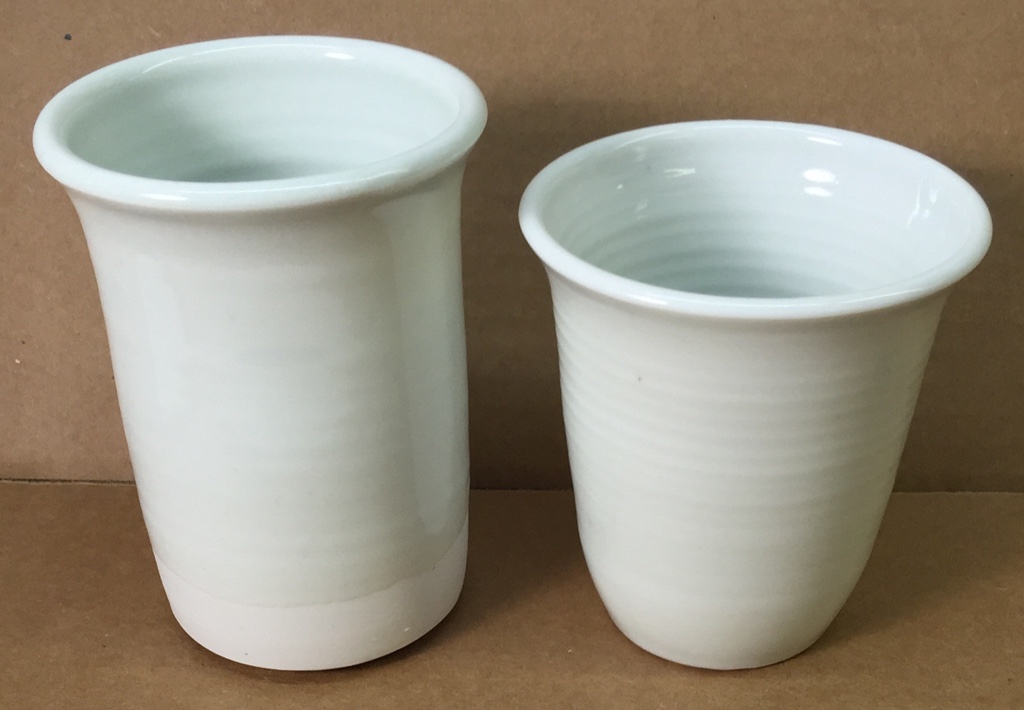| Monthly Tech-Tip | No tracking! No ads! | |
Want to make a cone 10R super translucent porcelain? Think again.
On the right is a porcelain used in China, renowned for its whiteness and translucency. On the left is a body made from Grolleg kaolin, this is commonly used by potters. They were fired in reduction. The tiny iron specks that potters do not even notice are enemy number for the blue-white porcelain like this. Although they might be small the reduction atmosphere makes them blossom out in full glory to ruin the piece. These specks come as contaminants in the materials (especially the silica) and they are easily picked up during fabrication. For very white bodies like this, it is incredibly difficult to prevent the specks. For a perfectly white flawless result, the entire factory must be dedicated to this one body; they use wet processing, magnets, filter pressing, stainless steel equipment and impeccable procedures.
Videos
Links
| Glossary |
Porcelain
How do you make porcelain? There is a surprisingly simple logic to formulating them and to adjusting their working, drying, glazing and firing properties for different purposes. |
| Glossary |
Translucency
A highly sought-after property in porcelain, fired close enough to melting to take on the glass-like property of passing light. Translucency implies tendency to warp during firing. |
Got a Question?
Buy me a coffee and we can talk

https://digitalfire.com, All Rights Reserved
Privacy Policy

